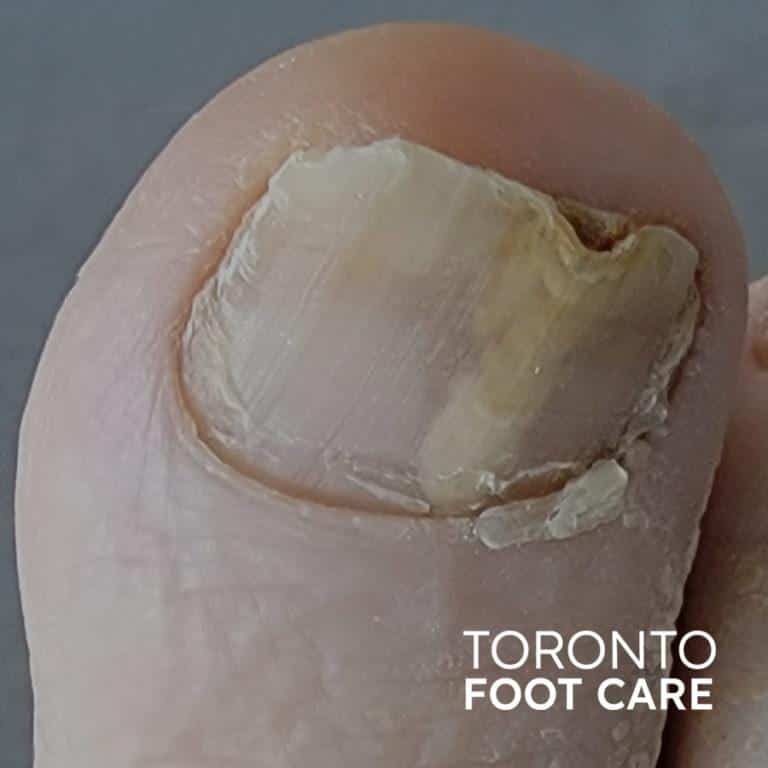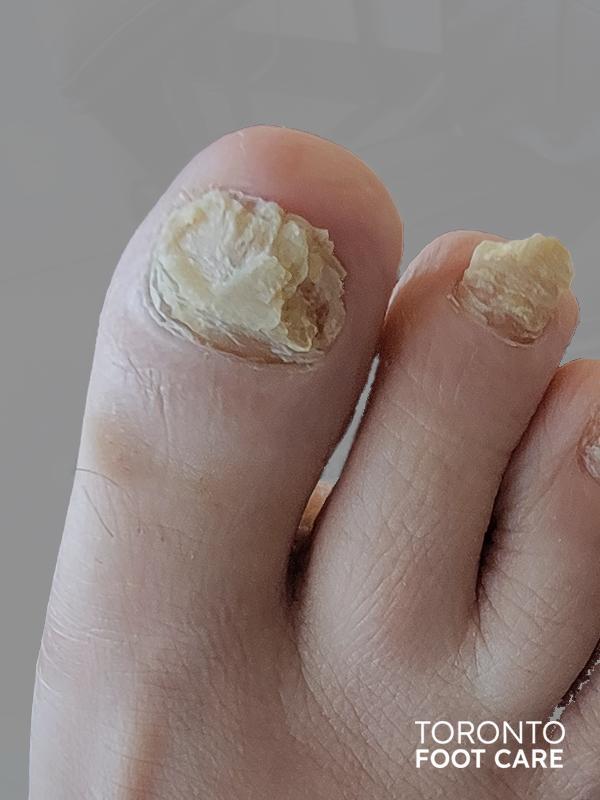Fungal Toenails | Onychomycosis
Fungal toenails are a contagious infection that affects the nails and can spread to the surrounding skin. Similar to athlete’s foot, fungus thrives in dark, damp, and warm environments.
Fungal toenails can be contracted in public spaces like gyms, showers, pools, and pedicure salons. Other risk factors include excessive sweating, poor hygiene, long nails, reduced foot circulation, and a weakened immune system (such as in diabetic patients), which can make individuals more susceptible to fungal infections.

Interesting Fact: Fungal infections are more frequently observed in diabetic patients with poor sugar control
and peripheral vascular disease (Akkus et al., 2016).
4 Common Symptoms for Fungal Toenails
- Discolouration – yellow, brown, white, or cloudy nails
- The appearance of the nail – the nail may become thickened, crumbly, flaky, or fragile
- Unpleasant odour – can be stemming from the nail or the surrounding skin
- Lifted nail – it can affect the surface of the nail (nail plate) or under the nail (nail bed)


The earlier you begin treatment for a fungal toenail infection, the quicker it can be resolved, reducing the risk of spreading to surrounding skin, other parts of the body, or even family members. Fungal infections are contagious and can easily spread in environments like public showers or shared spaces.
Early intervention prevents further complications, such as deep nail damage or infection of other nails.
Fungal Toenail Treatment Options
Although there are many over-the-counter antifungal treatments available, they may help manage symptoms but are often not fully effective in curing and eliminating fungal toenail infections. In some cases, the infection can persist or return even with regular use of these treatments.
At Toronto Foot Care, our chiropodist will conduct a thorough assessment to develop a tailored treatment plan aimed at both treating and preventing the recurrence of your fungal toenail infection. This may involve trimming the infected nail and applying topical antifungal medications. In more severe cases, oral antifungal treatments such as terbinafine are typically more effective. For extensive or persistent infections, removal of the infected nail may be necessary to fully address the issue.
If you suspect you have a fungal toenail infection, contact us today to schedule an assessment and start your path to recovery.
Studies have shown that, while topical treatments may alleviate symptoms, oral medications are generally more effective in completely clearing up infections, especially in difficult cases (Frazier et al., 2021).
Ready for your first visit?
Book an appointment today or call us at (416) 444-3668 to learn more about our foot care services.
Akkus, G., Evran, M., Gungor, D., Karakas, M., Sert, M., & Tetiker, T. (2016). Tinea Pedis and onychomycosis frequency in diabetes mellitus patients and diabetic foot ulcers. A cross sectional – observational study. Pakistan Journal of Medical Sciences. 32(4), 891–895.
Frazier, W.T., Santiago-Delgado, Z.M., & Stupka, K.C. (2021). Onychomycosis: Rapid evidence review. American Family Physician, 104(7), 359-366.
